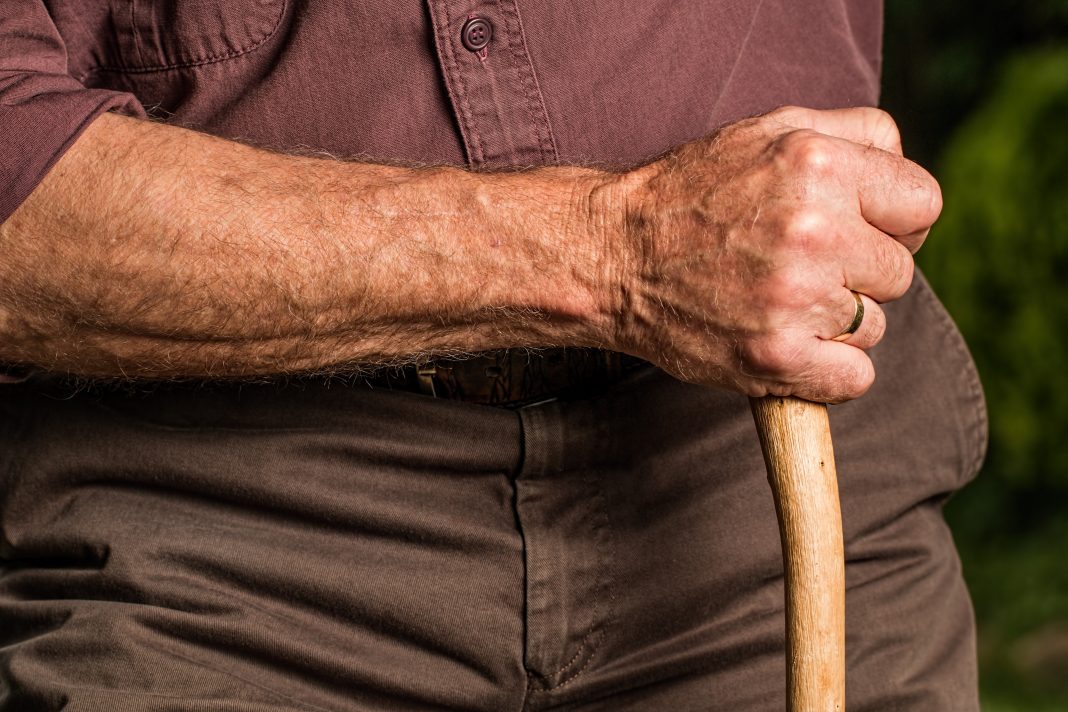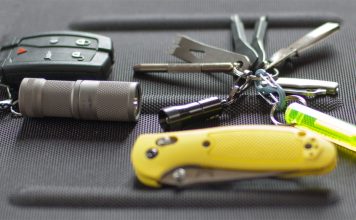| Issue #108 • November/December, 2007 |
The lake near our rural home has a long hiking trail that winds around its shore. We walk on this path in the morning through the oak trees and scrub brush. The wildlife we see while wandering along the trail includes wild turkeys, jack rabbits, Canadian geese, deer, lizards, and songbirds. But now there is trouble in paradise.

The local forest ranger posted a warning sign at the entrance to “our” trail showing a color picture of a big cat. Yes, it was a big yellow mountain lion. You may know it in your own home area as a cougar, catamount, panther, painter, or a puma. My wife and I have seen all the wonderful creatures up close and personal except for the mountain lions. The warning said the cats are most active early in the morning and early evenings.
We remembered a couple of news stories in the past years about how local hikers had been attacked by the big predators. The most memorable incident was the mountain lion that jumped down on the lone woman jogger’s back from a high bank running along the trail edge and bit through her spinal cord at the base of her skull. Since they have been protected, there are 50,000 in the world and California alone has an estimated population of 5,000 mountain lions. The large males can weigh up to 150 pounds. Reading on this subject tells us that more than 280 attacks and more than 40 fatalities have been documented by cougars. Most attacks occur on women and children due to their smaller size. The warnings advise not to run as the cats are attracted by motion just like their close relative, your friendly purring house cat. I would like to bring one of my trusty pistols along for company on our hikes, but the gun laws in California are getting vague and squirrelly about firearms regulations. Can I carry the unloaded pistol locked in the trunk, if I carry the ammunition inside on the back seat floor? If I wear the holster under my jacket on a cold day do I need a concealed carry permit? Is it OK to load the weapon in the parking lot in the car or should I carry the gear all separated down to the trail in the woods? Are the firearm rules different for the part of the trail that is on federal property than from the part of the trail that is on county property?
This confusion and uncertainty created around my Second Amendment rights to carry a firearm for self-protection made me try to think of another alternative. I could go buy a membership to a health club instead of walking outdoors in nature. I could drive thirty miles down to the city and try to find a safe area to walk around where I wouldn’t worry about getting mugged by a street criminal with a concealed gun.
|
Instead, in true Backwoods Home spirit, I came up with a self-reliant alternative. Thinking back to Early Man and how he defended himself and his loved ones from wild predators, I settled on some good old homemade self-defense. A stout walking stick that could also do double duty as a spear. That’s right folks, caveman technology for the new millennium.
I took a sturdy five-foot rake handle and drilled a five-inch deep hole in the end with my old brace and drill bit. This hole was the same diameter as a piece of recycled steel rebar that I cut to a 13-inch length with a hacksaw. I used an electric drill to make two small 1/8-inch holes three inches apart from one end of the steel rebar. These small holes were to secure the steel rod in the end of the wood handle with two galvanized nails.
After the rebar rod was firmly tapped into the hole in the wood handle, I then marked the rod and measured the distance to the small holes. Then I drilled the same sized holes all the way through the handle so that nails could be inserted.
I gave the end of the rod and inside the wood hole a shot of yellow glue and replaced it into the handle end. With a hammer, I bent the nails over and tapped the projecting ends into the wood so the rebar would stay tight inside the handle. I sharpened the end of the rod on my grindstone to a fairly blunt point. I wanted a pointed end but not to thin out the metal so much that it would quickly get bent or dull when I was using it as a walking stick point. I even gave the metal tip of my new walking stick a fast coat of paint so it would slow down any rusting.
Now I was ready for our peaceful walk around the lake. My stout new walking “stick” in my hand made me feel confident that I had an edge on any feral predator, with two legs or four. That “cave man” technology is still working great after all these years.
















I like your cave-man technology solution! Our relatives both in Oregon and California choose to have conceal-carry certifications (of firearms, not a stout-stick weapon)! You get a small firearm, a holster to wear under your clothing on your waistband. A lady can purchase a purse made to hold and conceal her small firearm. I carry spray on my key-ring that is constantly in my hand after I exit my car. My Damsel in Defense spray shoots 16 feet. I can also carry my taser from Damsel. It was $70 and has safety provisions on it so that if taken from your hand, it can’t be used against you. Of course, a mountain lion couldn’t take it from you, but it would get a zap you wouldn’t believe. My taser is heavy-duty, and tactical. Thanks for a great article.